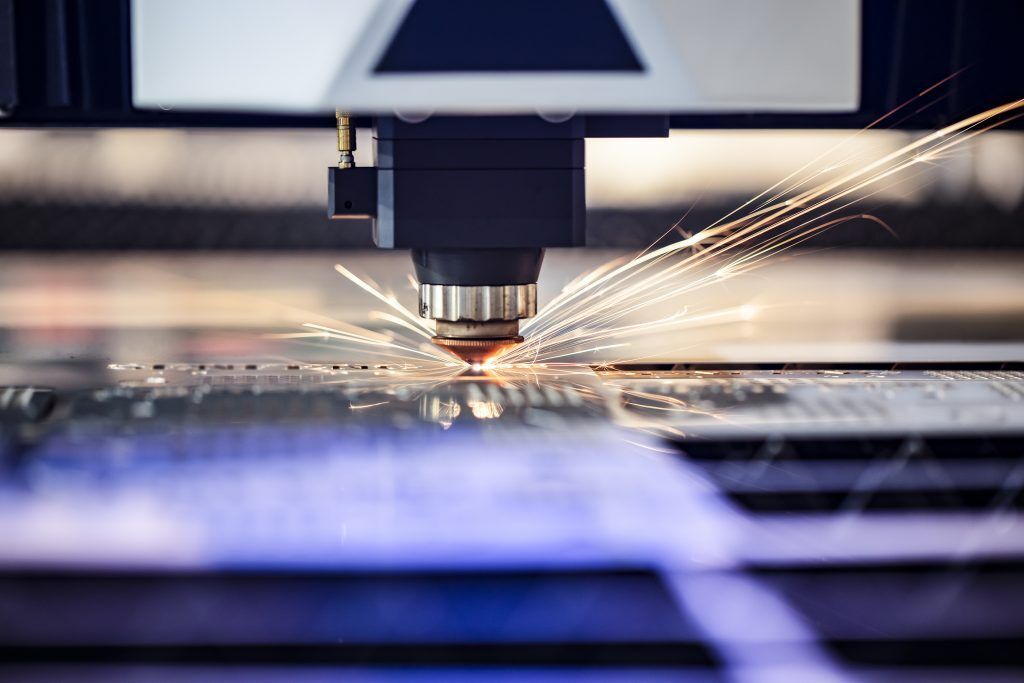Blog
What are Laser Cutting Machines?
The computer numerical control (CNC) and laser optics settings of a laser cutting machine mini control and direct the laser beam's intensity for the desired design effect or the specific cuts required in a manufacturing or design project. A high powered beam is released as a result of a chemical reaction caused by a process in which electrical discharges or a lamp trigger a lasing material within a confined container to generate a laser beam. A mirror is used to reflect the beam in a stream of monochromatic light. The light from the mirror is directed to the work area through fibre optics or mirrors, with the narrowest point of the beam cutting or etching the design onto the material.
Engineering often utilizes a laser cutting machine to precisely cut components of machines. A laser cutting machine is often used for industrial applications to cut structural and piping materials, as well as flat sheet materials such as metal. Metal, wood, and plastic can all have various designs etched or engraved onto them with the correct CNC settings. CAD (Computer Aided Design) software, which is specialized, is utilized to program the CNC and direct it to carry out the cutting, engraving, or etching details that are necessary for the laser cutting project. Whether smaller or larger-scale manufacturing projects can be undertaken is determined by the size and capacity of the laser cutting machine.
Fiber Laser Cutting Machines: Basic Information
A laser is, in short, a beam of light which is focused, allowing a large amount of energy to be concentrated in a small area. If exposed to the laser, the material in front of it will burn, melt, or vaporize, forming a single entity. By incorporating CNC technology, it is possible to fabricate intricate parts out of wood, plastic, rubber, metal, foam, or other materials using a machine that can both cut and engrave. When doing laser cutting, each material has its own pros and cons.
Due to its 2D nature, preparing documents for laser cutting is very straightforward. When designing parts, there are some guidelines that should be followed. Here, I have collected some for you.

Profile cutting
All cutting shapes must be completed. The most important rule is this one. The part cannot be removed from the original sheet metal unless the profile remains open. If used for engraving or etching, it is not necessary to close the outline, with exceptions.
Making a hole through laser cutter
You can drill a hole with a laser (through laser cutting machine mini) first if you must have one with a smaller tolerance, and then drill it with a drill. The drill bit will be guided during drilling by a small hole that the perforation will create in the material. The perforation should have a diameter of approximately 2-3 mm. If possible, it is best to use the same thickness as the material, and then gradually drill increasingly larger holes until the desired diameter is reached; according to my experience, in this case, the smallest possible hole should be used.
Threaded hole
At least 1.5 mm is required for material thickness. Laser cutting causes steel to melt and evaporate, for example. Once cooled, the incision becomes hard and difficult to thread. It is the best to use laser drilling before thread cutting, and then drilling.
Trumpet fillet
By adding chamfers (at least half the thickness of the material) to each corner, sheet metal parts may become cheaper despite having sharp corners.
Notches and lugs
The width of the notch must be at least 1 mm, or the thickness of the material, whichever is greater. The width must not be exceeded five times in length. Whichever is greater, the lug must be at least 3 mm thick or twice the thickness of the material. The length should be less than five times the width, as is the case with the notch. The notches must be at least 3 mm apart, and the lugs must be a minimum of 1 mm or greater than the material thickness apart. If this rule is not followed, parts may become deformed.
Multiple or thin parts
For a successful experience when cutting multiple parts on the same metal plate, ensure that the distance between them is not less than the thickness of the material. If the parts are situated too close to each other or the cut parts are too thin, there is a risk of burning the material between the two cutting lines.







